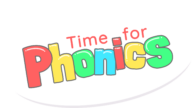Assess phonics the right way with Phonics Tracker
We’re delighted to announce a new partnership with Phonics Tracker – an instant assessment and tracking program for phonics, high frequency words and the phonics screening check, to help teachers assess children’s phonics progress accurately. We’re thrilled to be partnering with such a great platform as this will help teachers save lots of time and simplify the assessment of phonics. It’s a great fit for our programme!
How does Phonics Tracker work?
Phonics Tracker enables teachers to save time by recording children’s phonics progress via an online tracking system, rather than a paper-based approach. It’s designed to simplify assessment of phonics by instantly recording whether a child can successfully pronounce the GPCs for each phase, as well as the tricky/high frequency words. Once you’ve completed the assessment with each child, you are able to generate reports quickly and easily, identifying those children who need additional support, and/or which areas may need additional coverage during phonics lessons. You can also report specifically on gender, SEND and disadvantaged pupils, which is something you may wish to prepare in readiness for Ofsted.
You can also take snapshots of your phonics assessments over time, to identify whether interventions are working for children, this progress is recorded as a line graph. You can track sets of children, pupil premium children, classes, groups, and instantly compare how different children are achieving. Saving hours of time! The reports on Phonics Tracker show you how many children are achieving a specific percentage in the different phonics phases, allowing you to target your attention and revisit certain areas according to the needs of the class.
You can also track children’ ability in terms of the Phonics Screening Check, as there is a handy screening check included as part of Phonics Tracker. The reports give you a band of score rather than just a pass or fail, giving you an easy overview of how close children are to reading the required score to pass the Phonics Screening Check.

During phase 1 phonics, children are taught to listen attentively and to discriminate between different sounds. They are also taught to speak clearly and to use their voices to communicate. This is an important foundation for learning to read and write later on.
How does Phonics Tracker work with Time for Phonics?
Phonics Tracker is a great fit for Time for Phonics since we already follow the general order of progression in Letters and Sounds – with a couple of tweaks of course! Once you’re logged into the Phonics Tracker dashboard, which you can access via the free trial link above, you are able to select the Time for Phonics programme from the drop down list of available phonics programmes. From there, you are able to import your children’s names and school details in order to allow you to use the assessments and reporting. We have worked hard to ensure that the order of GPCs, tricky and high frequency words shown within our section of Phonics Tracker are correctly aligned with our order of progression, which is what makes this a perfect fit for our programme.

FAQ
Can I access Phonics Tracker as part of my Time for Phonics school membership? No, you will need to register and pay separately for Phonics Tracker, but once you’re logged in, you will be able to select our scheme and order of progression from the drop down menu. You can take a free trial to see what you think before committing, no card details are taken.
How does Phonics Tracker tie in with the Time for Phonics intervention programme? We have updated our guidance, training and documentation around our phonics intervention programmes for those schools using Phonics Tracker to explain this more fully.
Can we assign the Time for Phonics decodable texts using Phonics Tracker? We are currently working on something that will allow you to assign and benchmark decodable texts based on the percentage of GPCs and tricky words that children are able to accurately identify. More information will be released on this soon.
Can we carry on using the existing Time for Phonics assessments? Yes, if they’re working for you and your school, and you’re already confident and comfortable using them, they will continue to be available for all of our schools via our phonics assessment page.
Can I use Phonics Tracker to help prepare for the Phonics Screening Check? Yes, Phonics Tracker has some very useful assessment and resources that will help you understand which children are on track to pass the screening check. However, you can also continue to use our existing Phonics Screening Check resources, that includes a mock test and additional guidance.
Do I need to use all of the assessments on Phonics Tracker? No. For example there are captions and sentences for children to read in one of the assessments that you may prefer not to use. We recommend that you use the phonemes, blending, segmenting and phonics screening check assessments as a minimum.
Will the font on Phonics Tracker align with the font used on Time for Phonics? Once you’re logged in, you will be able to select whether to use the cursive or non-cursive font. For fidelity to our programme we recommend that you select the non-cursive font. There may, however be slight differences in a couple of the letter formations, for example the letter ‘f’, but children will have to deal with different fonts in everyday life, so use this as a discussion point. On the whole, the font is very similar.
How do we identify the lowest 20% of pupils using Phonics Tracker? Often children needing additional support are referred to as ‘the lowest 20%’. However you may find that you have more or less than 20% of your class in need of additional support. Our guidance is that children should be scoring 80% and over on Phonics Tracker to be considered ‘on track’. Those scoring between 60-80% should be considered for interventions. Children scoring below 60% should receive interventions immediately. For the purposes of Ofsted who may wish to specifically see the lowest 20%, you can use the reporting tools on Phonics Tracker to identify these children – or any other group (e.g. Pupil Premium, looked after children) as you see fit. More details on this are available on the Phonics Tracker training video which is part of our on-demand training.
How often should we assess? Usually, the recommended assessment is every half term, otherwise it can become time-consuming and over onerous. However if you have a new child, or a child whose progress you are concerned about, you may wish to assess more frequently. Assessment for learning should of course take place daily, within the lesson. As soon as you identify that a child is falling behind, they should be targeted using our phonics intervention programme.
Fancy a closer look at our programme? Sign up for 14 days free access today – no card details taken, or obligation to sign up. Your free access will naturally access should you decide not to sign up.


